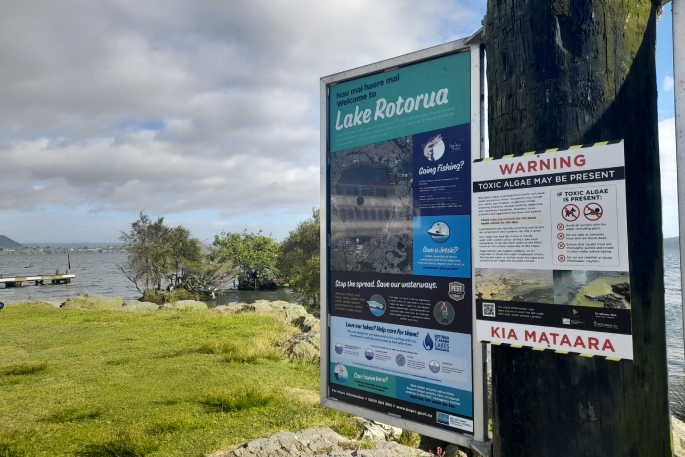Recreational water users in the Bay of Plenty and Lakes districts should be aware of potential blue-green algae (cyanobacteria) blooms when using local waterways during the next few months, says Health New Zealand – Te Whatu Ora.
“While blooms are less likely to occur in the cooler months, it’s important to know when it’s not safe to help reduce the risk of you and your loved ones getting sick,” says Dr Gregory Evans, Medical Officer of Health at the National Public Health Service.
High levels of cyanobacteria, or blue-green algae, can be toxic and harmful to health.
“Algal blooms can develop rapidly and unpredictably. If the water looks discoloured, smells unusual, or if there is scum or leathery mats of black or brown algae on the surface of lakes or on the beds of rivers, it’s best not to enter the water or eat shellfish from the area.”
During winter testing for blue-green algae is carried out as needed and in response to reports about possible algal blooms in the region.
This is due to the cooler temperatures making blooms less likely for most waterways.
Contact with algal blooms can cause asthma and hayfever attacks in some individuals, as well as skin rashes, stomach upsets, and in some cases neurological effects such as tingling around the mouth, headaches, breathing difficulties and visual problems.
Algal mats and scum may also accumulate along the shoreline of the lake and so it’s especially important that parents ensure that children avoid contact with these as they may be toxic.
Dogs are particularly at risk and should also be kept away from the shoreline. Elsewhere in New Zealand there have been reported deaths of dogs that have eaten algae on shorelines.
Currently, there is a temporary health warning still in place due to algal blooms for Lake Rotoehu.
What you need to know:
If you think cyanobacteria is present keep yourself and your pets safe by avoiding all contact with affected water.
-Levels of cyanobacteria can change quickly so it is important to check health warnings, nearby signage and any visible signs of blue-green algae before coming into contact with the water.
-Do not take or consume trout that are found dead.
-Ensure that trout caught in the affected areas are thoroughly gutted and rinsed in clean tap water before eating.
-Do not eat shellfish or kōura from affected areas.
-It is advised to err on the side of caution and avoid water activities including riverside fishing and duck shooting until you can confirm the water is safe.
If you have come into contact with affected water and have concerns about your health please contact your GP or Healthline on 0800 611 116. In an emergency call 111
Current local health warnings and recreational water information can be found through these channels:
-Toi Te Ora Public Health– toiteora.govt.nz/health-warnings
-LAWA: lawa.org.nz/explore-data/swimming
-Bay of Plenty Regional Council - boprc.govt.nz/our-region-and-environment/water/swimming-water-quality/
-Waikato Regional Council - waikatoregion.govt.nz/environment/natural-resources/water/rivers/water-quality-monitoring-map
-Signage at locations



0 comments
Leave a Comment
You must be logged in to make a comment.